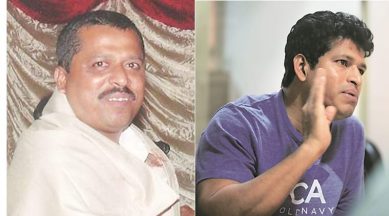It has been ten years after the death of a Pune-based RTI activist Satish Shetty in 2009. Shetty was fighting for seeking information through RTI on an ongoing road project in Maharashtra. The case has reached the Supreme Court and achieved a significant point, posted to be heard on November 07. The judge presiding over the matter, Justice B.R. Gavai, recused himself from the case and the hearing was postponed to the second week of December.
Who is Satish Shetty?
Satish Shetty was thirty-eight-year-old fighting to unveil the truth of what he alleged to be land grab scam of over a multi-crore. Soon after, Satish was stabbed to death on January 13, 2020, which is seen as a fall out of his activities, seeking information through RTI. On October 15, 2009, Satish filed a case of cheating against thirteen persons, two of them were IRB representatives at the Lonavla police station.
He alleged that the IRB through his representatives had used forged documents to deceitfully grab over 85 hectares of state-owned land for the road project. He had made another complaint to the Lonavala police station, apprehending a threat to his life. It was only within days of the complaint that he was stabbed to death near his house in Talegaon Dhabade.

Right after the death of Shetty, his brother Sandeep filed a case at the local police station alleging murder. The complaint named Mhaiskar and other representatives of the IRB. However, the police arrested only five people named– Pramod Dattatray Waghmare, Vijay Dnayeshawar Dabhade, Dongra alias Dongarya Hanumanth Rathod, Shyam Ramchandra Dabhade and Navnath Maruti Shelar,
The quest for justice by Shetty’s brother:
Since his death, his brother Sandeep Shetty has been following the matter with the police, the Central Bureau of Investigation [CBI], who later took charge of the case. His fight for seeking justice for the gruesome murder of his justice went through the trial court, the Bombay High Court and has now reached the Supreme Court level as the last and final resort. Sandeep approached the Supreme Court via a special leave petition [SLP], represented by senior advocate Dushyant Dave.
The petition filed through his counsel raises severe doubts over the judgement of the Bombay High Court, which allowed the Virendra Mhaiskar, the chairman and managing director [MD] of Ideal Road Builder [IRB]. Ideal Road Builder is the company which Shetty was probing before he was killed, Mhaiskar was named in the FIR but was not made a party to the said matter.
In the petition by Sandeep, it is claimed that a writ petition seeking impartial delivery of justice by way of investigation, the person named in the FIR as accused should not have been given the chance of hearing in the matter. The petition relies on the precedent as laid down in the case of Dinubhai Boghabhai Solanki vs State Of Gujarat & Ors, a decision of the apex court.
Intervention by Mhaiskar, not a party to the petition.
The Bombay High Court was previously moved by Sandeep as against the decision of the Sessions Court decisions. The Session Court ruled to accept the closure report as filed by the Central Bureau of Investigation [CBI] on April 13, 2018. The closure report of the CBI claimed that due to lack of prosecutable evidence against any of the accused, the murder case of Shetty is closed. Though the report gives a clean chit to all the accused, it mentions two retired police officers, one Bhausaheb Andhalkar and another Namdeo Kauthale for “botching up the initial investigations.”
Both these retired police persons were booked for the destruction of evidence and conspiracy while the murder charge was conveniently dropped against the accused. While approaching the Bombay High Court against the acceptance of the closure report of the CBI, as ordered by the Sessions court, Sandeep did not name any accused as a party including Mhaiskar. However, as the future course of events unfolded, though the Central Bureau of Investigation, despite a party to the petition, did not appear however Mhaiskar intervened. Sandeep has said that every time CBI is implicated as a party, Mhaiskar intervenes.
Before the Bombay high court, division bench on the hearing of the writ petition, the bench comprised of Justice Ranjit More and Justice Bharati Dangre. Mhaiskar approached the court through his lawyer, asking Sandeep for a copy of the petition. Sandeep in an interview with The Wire said that he had refused to provide a copy of the petition since Mhaiskar was not named as a party in the petition. He said that it was only within days of refusing to give a copy that Mhaiskar through his counsels moved the Bombay high court.
Strangely, even the court allowed Mhaiskar’s intervention application, despite being in full knowledge of the fact that he was not made a party in the case. Furthermore, unfavourably to Sandeep on March 18, 2019, the Bombay High Court upheld the session’s court’s order and disposed of his petition in favour of the accused. Sandeep claims that the decision of the Bombay High Court is ‘a serious violation of law’. He mentions in his petition before the apex court that the Bombay high court failed to appreciate a settled position in law despite the lacunae being highlighted before the court.
Since Sandeep complained about the murder of his brother, he has been suspecting the involvement of a more extensive network in the case and thus resorted to seeking a CBI enquiry resulting in the transfer of investigation. The complaint also sought a probe against Ajit Kulkarni, a lawyer of the IRB, Jayant Dangre, a liaison officer and Dilip Shinde, former deputy superintendent of police. However, the CBI did not proceed against them.
CBI sat over the case for over a year, criticised by the Bombay High Court
Since the case was transferred to the CBI for investigation, all his efforts have been focussed only on keeping the case alive. He says
“The investigations were disrupted several times, and the agency behaved differently from time to time, to the point that it became unreliable,”
In over a year’s duration of the investigation, the CBI only beat behind the bushes, looked at the circumference and did not proceed over the prime accusations. It only got to its feet after a scathing remark made by the Bombay High Court criticising it saying it was unwilling to touch Mhaiskar and other IRB officials for progress in the case, as they are powerful financially and otherwise. The court said
The court had observed:
“Before concluding, it will be necessary to note down that for reasons best known to the local police; they never investigated the case from the angle of suspicion against Mhaiskar, the promoter of IRB infrastructure… even though the name was specifically mentioned in the FIR… After the investigation was handed over to the CBI, it was expected the CBI would investigate the case thoroughly from all the angles. But it appears, that for the last eight months, the CBI has not even touched any of the suspects of the murder for the reasons best known to the investigation officer.”
However, it made no change in the attitude of the CBI towards the case, whereas, on the other hand, the pending complaint of cheating and forgery at the Lonavala police station met a dead end as the police filed a C Summary case. It said that it is not possible to ascertain as to whether cheating and forgery had taken place to grab land by the IRB officials. A closure report was accepted in the cause without any objection by the Wadgaon Maval magistrate court on December 27, 2011.
The classic move by CBI to impair the investigation:
However, in what is reported to be ‘a baffling u-turn’, the CBI made some progress and conducted raids on IRB infra and its associate companies. It also moved the Bombay High Court challenging the closure report filed by the local police. They said there is enough evidentiary material to proceed with a charge sheet against the accused and that the filing of a C-Summary case was erroneous in law. They claimed to be in possession of evidence linking the murder of Satish Shetty to his expose in the land-grabbing case against the IRB and its officials.
It sought to transfer the land-grab case of cheating and forgery as filed by Shetty. As a result in August 2014, the case was handed over to the CBI to look for the more substantial nexus. However, in what was expected only three days later, it filed a closure report in the case of the murder of Shetty for lack of prosecutable evidence. The strange observations made in the closure report pointed that the investigation carried out under the supervisions of one Sunil Pratap Singh, did disclose a motive and was also able to find evidence for abetment, bribes offered, and threats made to the deceased, by those named as accused in the FIR.
However, even then, the officer had sought closure of the murder case. It was absolutely incomprehensible as to what took place over the last three days, resulting inclosure. It is said that Pratap Singh in a phone conversation with Shetty’s brother Sandeep disclosed ‘tremendous pressure’, recorded by Sandeep and accessed by The Wire. However, the closure was not accepted by the High court for the least to say it was inexplicable.

Therefore, going further with the investigation in January 2015, the CBI raided 22 different premises of agencies and companies linked to IRB. The CBI has also claimed to have recorded the statements of 500 persons as a part of the investigation. However, Sandeep, argues in his petition that this move of the CBI was made to thwart his efforts to expose the CBI as the investigative agency ignored allegations made against the people named in the FIR and rather went to implicate two retired officers instead, accusing them of botching the investigation, which can be said to be a classic move to suppress the truth.
Intimation of closure report by CBI:
Once again, the CBI has appeared before the magistrate’s court in April 2019 informing about a closure report. Sandeep claims in his petition that the same was done without following the process as prescribed in Section 173(8) of the Code of Criminal Procedure (CrPC). As per the law laid in the said provision, an investigation is to be concluded either with a chare-sheet or a final report submitted to the court asking permission to complete the investigation.
In response, the CBI has said that it was only an intimation about the filing of a closure report and it was not filing one already. The process of intimation, not mentioned under any provisions of the law, has also been challenged before the apex court through SLP submitted by Sandeep.

